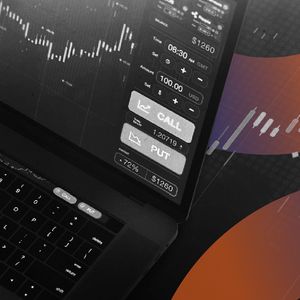In a significant development for the cryptocurrency industry, David Sacks, a key figure advising the Trump campaign on crypto and AI policy, has voiced strong support for the U.S. Federal Reserve’s recent decision to ease certain guidelines related to banks’ engagement with crypto assets and stablecoins. This move is being interpreted by some as a direct response to previous regulatory approaches and a potential catalyst for broader mainstream adoption of digital assets. What Exactly Did the Fed Roll Back, According to David Sacks? David Sacks didn’t mince words when commenting on the Federal Reserve’s action. He characterized the rollback as a reversal of what he termed “Biden-era rules.” Specifically, he linked these previous rules to the controversial concept known as Operation Chokepoint 2.0. For those unfamiliar, the original Operation Chokepoint was an initiative under the Obama administration that aimed to prevent banks from doing business with certain types of companies deemed high-risk. Crypto advocates and some political figures have argued that a similar, albeit unofficial, pressure campaign has been applied to the crypto industry under the current administration, making it difficult for legitimate crypto businesses to obtain essential banking services – a critical issue affecting crypto banking access . Sacks’ view is that the Fed’s recent action signals a departure from this perceived approach, potentially clearing the path for traditional banks to engage more freely with the crypto sector. This is a pivotal point for anyone following the intersection of traditional finance and digital assets, and it directly impacts the future of Fed crypto banking regulations. Who is David Sacks and Why Does His Opinion on Trump Crypto Policy Matter? David Sacks is a prominent venture capitalist and entrepreneur, known for his involvement with PayPal and Palantir Technologies. More recently, he has become a vocal commentator on technology, politics, and the economy. His significance in this context stems from his role as a co-lead on the Trump campaign’s crypto and AI policy team. This position gives his statements considerable weight as indicators of potential future regulatory direction should Donald Trump return to the presidency. His alignment with a potential Trump crypto policy makes his comments on the Fed’s actions particularly relevant. It suggests that easing restrictions on banks dealing with crypto could be a priority under a future Trump administration, contrasting sharply with the more cautious, and in the view of critics like Sacks, restrictive approach perceived under the current administration. Understanding the “Biden-Era Rules” and the Shadow of Operation Chokepoint 2.0 The concept of Operation Chokepoint 2.0 is contentious. It’s not an official government program but rather a term used by critics to describe a perceived coordinated effort by regulators to pressure banks and financial institutions into limiting or ceasing services to the crypto industry. Proponents of this view point to: Statements from regulators warning banks about the risks of crypto. Increased scrutiny and delays in processing applications from crypto firms for banking services. Guidance issued to banks suggesting caution or highlighting risks associated with crypto activities. The argument is that this pressure, while not a formal program like the original Operation Chokepoint, effectively ‘chokes off’ the crypto industry’s access to the traditional banking system, hindering growth and innovation. Restoring robust crypto banking access is seen by critics of this approach as essential for the industry’s health and ability to serve customers. Sacks’ framing of the Fed’s rollback as a reversal of these “Biden-era rules” tied to Operation Chokepoint 2.0 highlights the political dimension of crypto regulation and the differing philosophies on how traditional finance should interact with digital assets. What Was the Federal Reserve’s Specific Action Regarding Fed Crypto Banking? While the specific action Sacks is referring to wasn’t explicitly detailed in the brief statement, it likely pertains to the Federal Reserve’s decision to rescind Supervisory Letter SR 15-1. Issued in 2015, this letter provided guidance to banks on managing risks associated with new, innovative activities, including those involving digital assets. While not an outright ban, critics argued it contributed to a climate of caution and de-risking by banks regarding crypto. Rescinding such guidance could signal to banks that the regulatory stance is shifting, potentially making them more comfortable exploring or expanding services related to crypto and stablecoins, provided they manage risks appropriately under existing frameworks. This is a crucial point for the future of Fed crypto banking policies. Here’s a simplified comparison of the perceived approaches: Perceived “Biden-Era” Approach (Operation Chokepoint 2.0) Post-Fed Rollback (Supported by Sacks) Regulatory pressure/warnings discouraging banks from crypto. Rescinding cautionary guidance (like SR 15-1). Difficulty for crypto firms to obtain banking services. Potential for increased bank comfort and willingness to serve crypto. Focus on risks of banks engaging with crypto. Emphasis on banks managing risks within existing frameworks while potentially engaging with crypto. Limited crypto banking access . Potential for improved crypto banking access . How Does Improved Crypto Banking Access Support Mainstream Adoption? Easier and more reliable access to banking services is absolutely fundamental for any industry to integrate with the broader economy, and crypto is no exception. For mainstream adoption to truly take off, several things need to happen, and robust crypto banking access is key to many of them: On-Ramps and Off-Ramps: Individuals and businesses need simple, reliable ways to convert traditional fiat currency into crypto and vice versa. Banks are the primary gatekeepers for these conversions. Limited banking access makes it harder and more expensive to get into and out of crypto. Business Operations: Crypto exchanges, custodians, stablecoin issuers, and other blockchain-based businesses need bank accounts to pay employees, cover operational costs, manage liquidity, and interact with the traditional financial system. Without banking access, these businesses struggle to function legally and effectively. Stablecoin Utility: Stablecoins, designed to maintain a stable value relative to traditional currencies, often rely on reserves held in traditional bank accounts. Access to banking is essential for issuing, redeeming, and managing stablecoins transparently and securely. This is crucial for the growth of stablecoin use in payments and remittances. Institutional Participation: Large financial institutions (like investment funds, corporations, etc.) require clear pathways and supportive banking infrastructure to hold, trade, and settle crypto assets. Easing Fed crypto banking rules can make this participation more feasible and attractive. Sacks’ point is that by reducing perceived regulatory hurdles for banks, the Fed’s action could unlock greater willingness among financial institutions to provide these essential services, thereby smoothing the path for individuals and businesses to engage with crypto, leading to broader mainstream adoption. What Are the Potential Benefits and Challenges of This Shift? The potential implications of the Fed’s perceived shift are multifaceted, presenting both opportunities and challenges. Benefits: Increased Legitimacy: Greater bank involvement can lend an air of legitimacy to the crypto industry, potentially attracting more conservative investors and users. Improved Efficiency: Better banking access can streamline operations for crypto businesses, potentially leading to lower costs and improved services for users. Innovation Boost: Easier access to financial services can foster innovation in crypto products and services that require interaction with traditional finance. Economic Growth: A thriving, well-integrated crypto sector can contribute to economic growth through job creation and new financial activities. Clearer Regulatory Signals: Rescinding old, potentially ambiguous guidance can provide banks with more clarity, reducing uncertainty. Challenges & Considerations: Risk Management: Banks still need to implement robust risk management frameworks for engaging with crypto, covering areas like anti-money laundering (AML), know-your-customer (KYC), cyber security, and market volatility. Regulatory Clarity Still Needed: While some guidance may be rescinded, comprehensive regulatory frameworks for crypto and stablecoins are still under development in the U.S., creating ongoing uncertainty. Bank Appetite: The Fed’s action doesn’t *force* banks to engage with crypto; it merely potentially removes a perceived hurdle. Banks will still make decisions based on their own risk assessments and business strategies. Political Uncertainty: Regulatory approaches can shift depending on the political climate and election outcomes. A potential future Trump crypto policy might be more favorable, but regulatory direction could change again. Consumer Protection: As banking access increases, ensuring adequate consumer protection remains paramount. What Does This Mean for the Future of Crypto Regulation and Trump Crypto Policy? David Sacks’ enthusiastic response provides a strong signal about the likely direction of Trump crypto policy if he were to win the presidency. It suggests a focus on: Reducing perceived regulatory burdens on the crypto industry. Facilitating the integration of crypto with the traditional financial system. Potentially contrasting sharply with the current administration’s approach, which Sacks and others view as overly cautious or even hostile (via Operation Chokepoint 2.0 ). The Federal Reserve is an independent body, and its decisions are not directly dictated by the administration. However, the regulatory environment is influenced by the broader political and economic climate. The Fed’s move, coupled with statements from figures like Sacks, adds another layer to the ongoing debate about how the U.S. should regulate digital assets. The future of Fed crypto banking guidelines will likely remain a topic of intense discussion and potential evolution. Actionable Insights: What Should Stakeholders Consider? For various stakeholders, this development and the surrounding commentary from figures like David Sacks offer insights: For Crypto Businesses: Continue pursuing relationships with traditional banks. Be prepared to demonstrate robust compliance and risk management practices. Monitor regulatory developments closely, particularly those from the Fed and other banking regulators. For Banks: Re-evaluate internal policies regarding crypto engagement in light of rescinded guidance. Assess the potential business opportunities and risks associated with providing crypto banking access . Build expertise in digital assets and relevant compliance requirements. For Investors: Understand that while regulatory shifts can impact market sentiment and infrastructure, fundamental analysis of crypto projects remains crucial. Be aware of the political dimension of crypto regulation and how potential policy changes could affect the industry. For Policymakers: Continue working towards clear, comprehensive regulatory frameworks for crypto and stablecoins that balance innovation with risk management and consumer protection. Conclusion: A Turning Point for Crypto Banking Access? David Sacks’ positive reaction to the Federal Reserve’s rollback of certain crypto-related guidance underscores a significant point of contention in the ongoing debate about crypto regulation: the ease with which the industry can access traditional banking services. By framing the Fed’s action as a reversal of restrictive “Biden-era rules” linked to Operation Chokepoint 2.0 , Sacks highlights a desire from within the Trump campaign’s orbit for a regulatory environment that facilitates, rather than hinders, the integration of crypto with traditional finance. While the full impact of the Fed’s specific action remains to be seen and regulatory clarity is still evolving, this development is viewed by proponents as a positive step towards improving crypto banking access , which is widely considered essential for achieving true mainstream adoption of digital assets and shaping future Fed crypto banking policies. It also offers a glimpse into the potential direction of Trump crypto policy . To learn more about the latest crypto market trends, explore our article on key developments shaping Bitcoin price action .


















